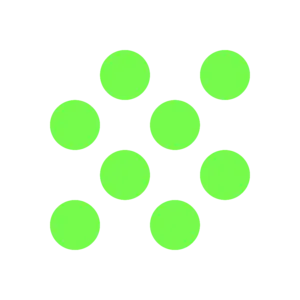Safety grading GREEN – SAFE
Chlorophylls (E140) are graded GREEN because they are natural pigments found in virtually all green plants and algae. These compounds play a vital role in photosynthesis and are part of the human diet through vegetables, herbs, and fruits. As food additives, chlorophylls are extracted from natural sources such as spinach, nettles, and alfalfa, and are considered safe by major health authorities including EFSA (European Food Safety Authority) and the US FDA. They are non-toxic, non-carcinogenic.
Scientific studies indicate that chlorophylls may even offer potential health benefits. Research has suggested antioxidant, detoxifying, and possible anti-inflammatory properties. Unlike synthetic colorants, chlorophylls have no evidence of harmful effects when consumed within normal dietary levels. Their only limitation is stability — they can degrade when exposed to heat, light, or acidic environments, which sometimes results in replacement by more stable derivatives like copper complexes (E141).
Because chlorophylls occur naturally in many of the foods humans have consumed for centuries, their use as additives is considered very low-risk. This justifies their GREEN – SAFE grading.
Should You Avoid E140?
There is no reason to avoid chlorophylls. They are naturally present in many healthy foods and are considered safe in all age groups. Only people with rare, specific allergies to plant extracts might have issues, but such cases are extremely uncommon. E140 can be safely consumed as part of normal dietary intake.
Common Uses
- Confectionery (candies, chewing gum)
- Beverages (liqueurs, soft drinks, herbal drinks)
- Dairy products (ice creams, yogurts, desserts)
- Sauces and dressings
- Baked goods decoration
- Health supplements (chlorophyll drops, tablets)
Common Names / Synonyms
- Chlorophyll
- Natural Green 3
- CI 75810
- Chlorophyll a & b
- Chlorophyllin (when water-soluble)
What is it?
Chlorophyll is the green pigment found in the chloroplasts of plants and algae. It absorbs light energy, primarily in the blue and red wavelengths, and plays a critical role in photosynthesis, the process by which plants produce energy. The chemical structure of chlorophyll includes a porphyrin ring with a central magnesium ion, similar to the structure of heme in blood, though with magnesium instead of iron.
As a food additive, chlorophylls are extracted from natural plant materials, often using solvents such as ethanol. Because natural chlorophylls are not very stable, especially in acidic or heated environments, food technologists sometimes use derivatives like chlorophyllins or copper complexes (E141) to improve stability and color retention. These forms are still considered safe. Chlorophylls are insoluble in water but soluble in oils, making them especially useful in fat-based products like chocolate.
Research has explored possible health benefits of chlorophylls, such as antioxidant activity and detoxification by binding with certain mutagens. While more studies are needed, these findings add to the positive safety profile of E140.
Where it’s allowed (EU vs US)
Chlorophylls (E140) are permitted as food colorants in both the European Union and the United States. In the EU, they are classified as natural colorants and approved for use in a wide variety of foods. In the US, the FDA recognizes chlorophyll and chlorophyllin as safe color additives, though with some restrictions on usage levels in specific products.
